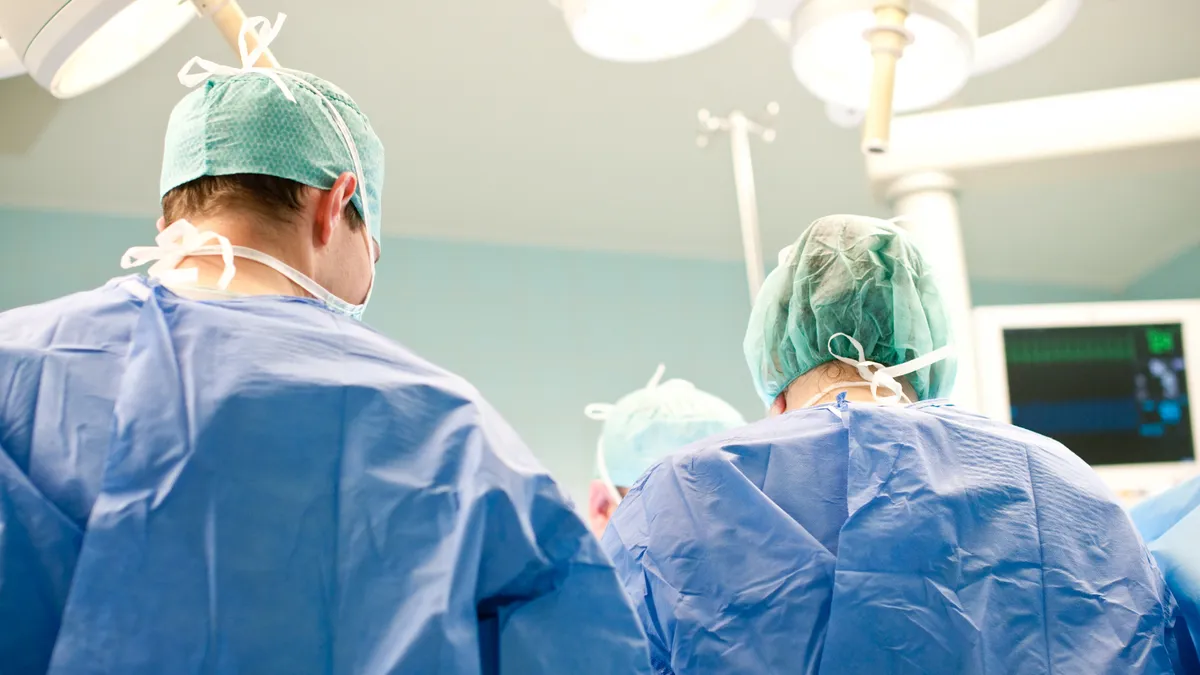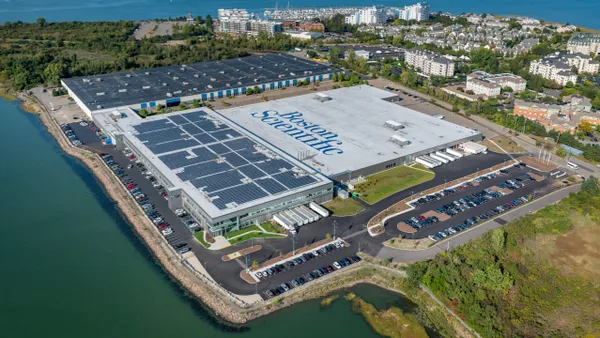Dive Brief:
- Baxter International said the FDA has cleared a new product in its line of synthetic bone graft substitutes for aiding bone formation in orthopaedic procedures.
- Baxter’s Actifuse osteobiologics products work to enhance silicon levels in the body to accelerate bone growth. As the patient’s body heals, the graft substitute is absorbed and replaced by the patient’s own bone, Baxter said.
- The new product, called Actifuse Flow, comes in a pre-loaded delivery syringe and is expected to be used in orthopaedic surgeries in the pelvis, extremities and spine, according to the company.
Dive Insight:
As a synthetic bone graft substitute, Actifuse offers an alternative to the autologous bone graft, the gold standard for orthopaedic procedures requiring graft material, in which bone is harvested from one site and transplanted to another in the same patient. Allografts, obtained from human cadaver bone, are another option.
Companies making competing synthetic bone graft products include Johnson & Johnson’s DePuy Synthes unit, Medtronic, Wright Medical, Zimmer Biomet and Stryker. According to the non-profit ECRI Institute, few studies comparing the different synthetic bone graft products are available.
Actifuse is used to fill gaps and voids in the skeletal system, creating a scaffold to accelerate bone formation. Baxter said it expects Actifuse Flow to be available to U.S. customers by year-end. Additional products in the Baxter’s osteobiologics surgery lineup include Actifuse ABX, Actifuse Shape, Actifuse MIS and Altapore.
Deerfield, Illinois-based Baxter acquired Actifuse through its $330 million acquisition in 2010 of U.K.-based orthobiologics company ApaTech. The business is part of Baxter’s Advanced Surgery division, which reported 15% sales growth in the second quarter. With $204 million in quarterly sales, the Advanced Surgery unit is one of Baxter’s faster-growing, albeit smaller, businesses.
Baxter estimates the global market for Advanced Surgery products, which include microsurgery implants and instruments as well as hemostats and sealants, to be worth $3.1 billion. It projects annual growth of 4% to 5% through 2023.










